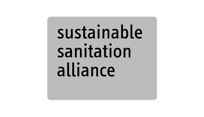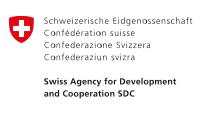Selected types of organic waste can be recovered from waste and used to produce solid fuel for cooking and heating U.7. Organic waste can be compacted with binders into briquettes or pressed without binders into pellets. As a preliminary step, waste can also be carbonised into char, and the crushed char powder used to produce carbonised briquettes.

Segregated organic waste with high cellulose and low moisture content (such as fallen branches or wood waste) has a high heating value and can serve as fuel for cooking or heating U.7. Raw waste can be compacted to increase its energy density. Briquettes are formed with binders and at a lower pressure. Pellets are pressed without binders at high pressure. Alternatively, the raw waste can be processed by carbonisation into char before compaction to briquettes. Carbonisation is recommended as it kills the pathogens potentially found in the waste, increases the heating value of the product and reduces emissions when burned. Waste must be free from non-combustible materials and chemical substances (paint, glue and lacquering) that, when combusted, can emit hazardous gases. According to WHO guidelines, solid biomass fuels are not a clean cooking solution because the combustion produces air emissions that can cause respiratory and cardiovascular diseases. However, they can support the transition away from wood and its associated deforestation.
Design Considerations
Solid fuel production from organic waste requires thorough waste segregation or high-quality sorting P.2 to remove impurities. Carbonisation converts organic materials into carbon or carbon-containing residues through heating in the absence, or limited presence, of oxygen. Shredded raw organic material or char powder can be mixed with organic binding agents such as starches before it is pressed into briquettes. Clay can also be used as a binder; however, it reduces the heating value and increases ash content. Pelletising involves compressing the material at high pressure into small, rounded cylindrical pellets. The applied pressure generates heat, which enables the naturally present lignin to act as a binder.
Materials
Carbonising requires a kiln. A crusher is needed to produce char powder, and a shredder to shred the raw waste into fine particles. There are several types of briquetting technologies and equipment that can be purchased or constructed. In humanitarian settings, non-motorised equipment is more common. While commercially available equipment may be used for production at a community scale, household-level production can use locally produced equipment. Pellet production usually requires automated equipment and includes shredders, drying ovens and screw extruders.
Applicability
Due to the training and equipment needs, fuel production from recovered biomass is more appropriate in stable, protracted or development settings, not in an acute response. It must be based on the local availability of suitable raw materials and not compete with cleaner cooking or heating solutions. The fuel produced should not compete with existing biomass fuel sales and cause market distortions. Pellet production is likely to be limited to community-scale interventions and locations with reliable access to electricity and the availability of more homogenous and specific raw materials. Briquettes can also be produced at a household level for self-consumption or sale.
Operation and Maintenance
Staff or communities engaged in pellet or briquette production must be thoroughly trained, including occupational health and safety X.4. Training needs for pelletising are more comprehensive than for briquetting. Fuel quality can be affected by humid and rainy climates as pellets can absorb moisture and the briquettes may not fully dry. The availability of biomass can fluctuate with the seasons.
Health and Safety
Carbonised briquette production should, ideally, be prioritised over raw waste briquettes as the product is more sanitised and generates fewer emissions when burned. Elevated temperatures during carbonisation or pelletising are necessary to eliminate potential pathogens. During production, heat and fumes are significant occupational risks. Operators must be trained and equipped with personal protective equipment X.4. Stocks must be safely stored to prevent fires. Solid biomass fuels are not a clean cooking solution because of their particulate matter (PM2.5) and carbon monoxide emissions.
Costs
The cost of biomass fuel production depends on the fuel type. Charcoal briquettes can be produced using cheaper equipment and manual power. Pellet production is more expensive due to its automated equipment and electricity consumption.
Social Considerations
Solid biomass fuels from waste can be manufactured locally, supporting local livelihoods and creating employment. Competition with existing community-based or commercial biomass fuel production or sales must be prevented by humanitarian actors to avoid distorting the market. Communities might be unfamiliar with the correct use of biomass fuels and require training. The fuel types produced must be suitable for the food preparation preferences of end users. Briquette production using natural starches as binders (e.g. cassava or maize flour) may compete with food consumption in food-scarce contexts and affect the price or availability of food produce.
Key Decision Criteria
Input Products
Organic Garden/Wood Waste
Output Products
Solid Biomass Fuel
Response Phase
Application Level
Management Level
Space Required
medium
Technical Complexity
medium,low
Objectives & Key Features
Transforming recovered biomass from waste into fuel, Waste diversion from disposal
Strength & Weakness
- Can increase access to fuel for cooking and heating
- Can reduce the exploitation of natural vegetation
- Can create income generation and economic opportunities
- Solid biomass fuel can lead to ambient air pollution and health risks
- Suitable biodegradable waste is often unavailable
- Potentially conflicting uses of waste biomass






